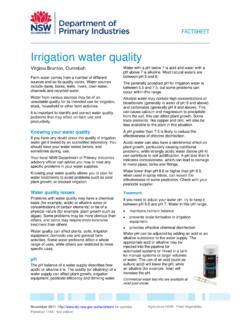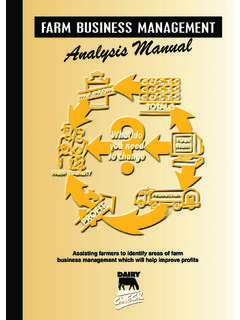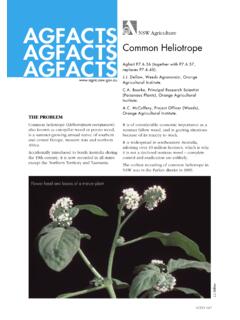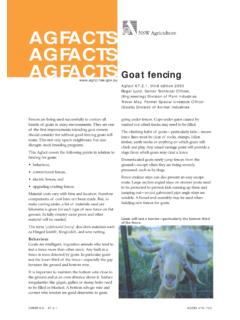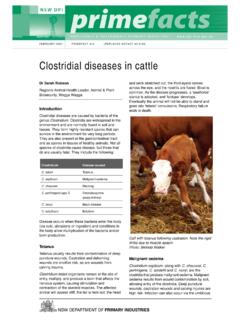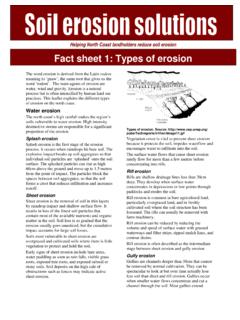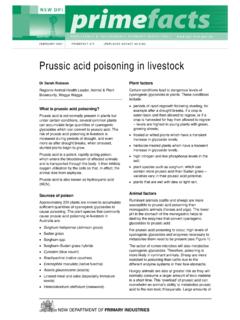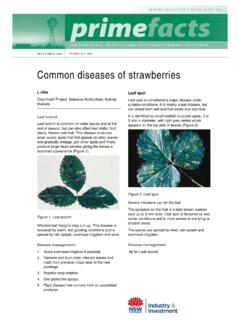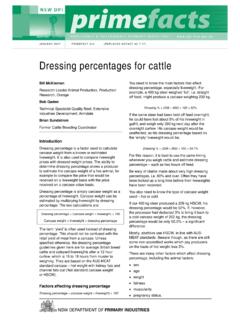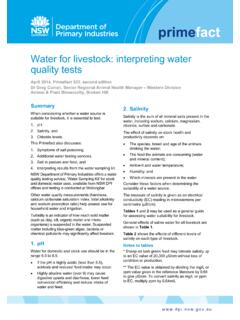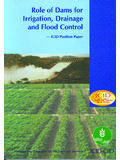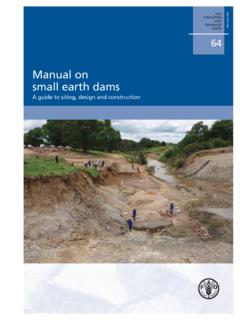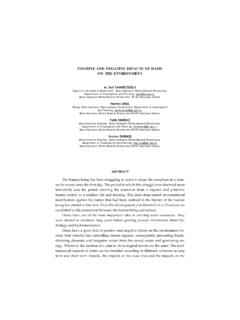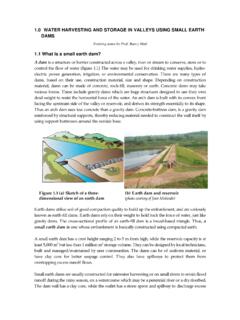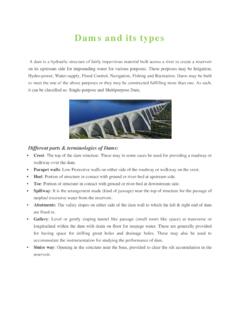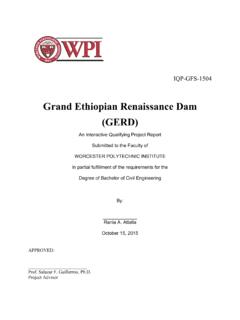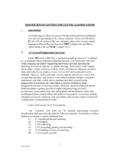Transcription of Fish in farm dams - Department of Primary Industries
1 NOVEMBER 2006 PRIMEFACT 89, THIRD EDITION. fish in farm dams Steven Boyd 1. The dam Aquaculture Officer, Fisheries Conservation and Aquaculture, Port Stephens Fisheries Centre Size The dam should have a surface area of at least ha (500 m2), preferably more. Introduction This Primefact is a guide to stocking fish for angling Stock access and domestic consumption on private property Ideally, livestock should be excluded from dams only. Commercial fish farming (aquaculture) is a stocked with fish , as they can damage dam walls specialised venture needing thorough investigation and muddy the water.
2 The best approach is to of the technology and economics, and requires a completely fence the dam, and provide an external permit from NSW DPI (which has literature on fish trough with pumped or gravity fed water, although and crayfish farming). Stocking of fish into public this may not always be practical. An alternative is waters (including creeks, rivers and impoundments) to partially fence the dam, and restrict stock access requires a special NSW DPI permit. to a narrow entry. Planting the fenced area with The past 20 years has seen a growing demand for trees has several benefits.
3 Planting can improve freshwater fishes to stock farm dams . Several the dam's appearance and stabilise its banks, whilst million fish have been sold to farmers throughout decaying leaves provide nutrients to start the food New South Wales. However, the stocked fish have chain, and falling insects are preyed upon by fish . had various fates, with reports varying from virtually Do not grow trees or shrubs on the embankment 100% survival and growth of 1 kg per year to or spillway as they can disturb the dam structure. anecdotal reports like I didn't see a sign of the fish ever again'.
4 Location To improve these variable results, during the late It is illegal to permit fish to escape from a dam. 1970s NSW DPI examined ways of increasing fish dams that are likely to flood (as in a gully) should production in farm dams . The research showed not be stocked, as it can be hard to prevent fish that production depends on many factors, including escaping. As well as reducing production in the food, predator control, water quality, water depth dam, escaped fish can cause major problems in and climate that are often beyond the landowner's local river systems, especially if they are not native control.
5 Nevertheless, there are ways to enhance to the local area. NSW DPI recommends that only production, and have fish on the table sooner. dams above the 1 in 100 year flood level on the This document outlines a range of issues you need eastern drainage and dams not inundated by a to consider before attempting to stock fish and to 1 in 100 year flood on the western drainage should maximise their survival after stocking, including: be used for fish stocking, to ensure that fish do not escape to waterways. the dam (location, size, and suitability);. water quality; Ease of maintenance choice of species; Consider installing a pipe and gate-valve in a new stocking rates; dam, so that it may be drained from the bottom.
6 This allows bad water to be drained easily, and fish stocking, survival, growth and feeding;. complete drainage helps in dam maintenance. (The potential problems and how to deal with them. site must have some slope.) Drained water should not enter adjacent waterways. Preparing the dam Suitable species Consider removing unwanted plants and fish from Fry and fingerlings are available from licensed an existing dam before restocking. New dams hatcheries throughout the State. See the should be filled and aged' for at least three months Aquaculture industry directory before stocking.
7 This gives the food chain time to ( develop, and can be assisted by adding locally cts/aquaculture-industry-directory). native water plants, shrimps and yabbies from other dams or other sources. Australian native fish Note. A Department of Natural Resources permit is Most native fish species are native either to the needed to build a dam on a watercourse. A NSW coastal drainages or to western NSW. In general, DPI permit may be required to collect organisms to fish from one region should not be stocked into the put in farm dams . Some species are illegal to stock other.
8 Exceptions to this rule are noted below. in your dam check with NSW DPI. Suited to the coastal and inland plains and the lower slopes of the Great Dividing Range, most 2. Water quality native species can tolerate water temperatures of 4 30 C. The catfish, and perhaps the silver perch Comprehensive water tests are expensive and are and the Murray cod, occasionally breed in dams ;. generally not needed for farm dams . Most surface however, the young often die from inadequate food, and bore water suitable for irrigation or stock is parasites, or through predation by insects, birds and acceptable for fish .
9 A small test stocking will quickly other fish . Some fish need complex environmental show whether the water is suitable. stimuli not easily reproduced in farm dams . Muddy water may not harm native fishes directly but it can lower food production by preventing light Silver perch or bidyan (Bidyanus bidyanus). penetration. On the other hand, some turbidity can Native to the western drainage (Murray Darling help reduce predation by making the fish hard to Basin). Wild (river) populations are listed as a detect by predators. vulnerable' species and are protected, although they have been stocked in many dams for angling.
10 The 3. Choice of species silver perch may be the best warm water fish for stocking in western drainage dams , because it is an omnivore (eats both animal and plant matter): it Species to avoid lives on shrimps, insects, plankton and algae, and so Some fish species (which are listed as noxious in can exploit a greater range of food sources than the NSW) are illegal to stock into farm dams . For the carnivorous fishes. Good to angle and excellent to latest list of noxious fish , visit the NSW DPI eat, it can reach plate size within two years. Stocking Fisheries website ( ).
